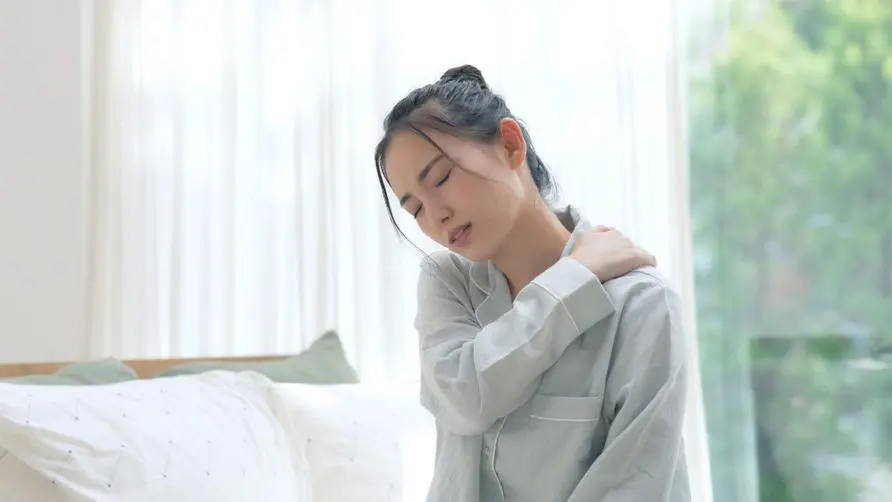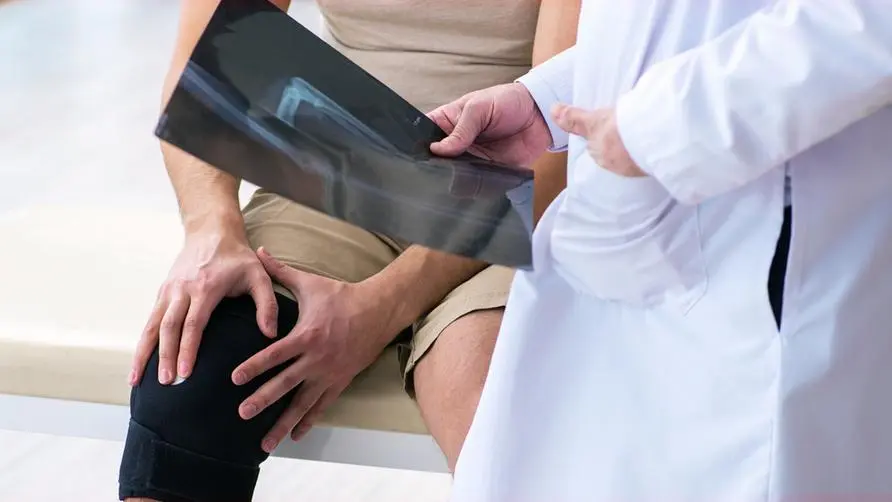Are diabetes and stroke likely to cause frozen shoulder? Doctors urge the elderly: "Part 1" suddenly stops moving and seek medical attention immediately

Are women more likely to have frozen shoulders? Without timely treatment, the angle of movement may be restricted.
If you have diabetes, thyroid disease, or have had limited mobility due to stroke or fracture, may you be at a higher risk of suffering from “frozen shoulder”? Dr. Qiu Ruhuang, the attending physician of the Rehabilitation Department of Chi Mei Hospital, said that he once treated a 55-year-old female diabetic patient. She initially felt shoulder pain and did not take it seriously, thinking it was caused by the long-term sitting style of paperwork. Unexpectedly, as time passed, the angle at which his arms could be raised began to be limited.
What’s worse is that if the shoulder of the affected side is pressed during sleep at night, the severe pain will cause the patient to often wake up at night due to pain, which seriously affects work and daily life, such as dressing, fetching things, bathing, etc. After examination by Dr. Qiu Ruhuang and supplemented by musculoskeletal ultrasound examination, the final diagnosis was “adhesive shoulder capsulitis”, which is also commonly known as frozen shoulder.
After the diagnosis of frozen shoulder, the patient immediately received manual rehabilitation therapy. Although the symptoms improved during the period, the angle was still partially limited. After evaluation, the doctor recommended ultrasound-guided shoulder capsuloplasty injection treatment. This treatment can be performed directly in the outpatient clinic without entering the operating room or general anesthesia. After the complete course of treatment, the patient’s shoulder elevation angle has significantly improved, and the pain index has also improved a lot.
Pain gone but activity still limited? Doctor reveals the “4 major stages” of frozen shoulder disease
Dr. Qiu Ruhuang explained that frozen shoulder is usually considered a disease of 50-year-olds, but in fact it often occurs in middle-aged people between 40 and 60 years old, and the proportion of women suffering from the disease is higher than that of men. Primary adhesive capsulitis usually has unknown causes, but if the patient has diabetes, thyroid disease, or has been immobile for a long time due to stroke or fracture, the risk of secondary frozen shoulder is higher.
The most common symptoms of frozen shoulder include “shoulder pain” and limited “shoulder movement” angle. This pain may radiate upward or downward to the head, neck or upper arm, and is especially felt when raising the arm overhead or moving the arm behind the back. Pain and stiffness.
In the past, frozen shoulder was generally considered to be a “self-limiting” disease. Patients would go through 4 disease stages in sequence, and the process may take as long as nearly 2 years:
Pain period (1-3 months): Pain first appears.
ALS period (3-9 months): Pain intensifies and angle restriction increases.
Freezing period (9-15 months): The pain gradually decreases and the angle restriction reaches its most severe level.
Thawing period (15-24 months): The pain almost disappears, but the angle is still limited.
However, recent studies have pointed out that without relevant treatment, although most patients will eventually reduce their pain, the angle will still be limited, and some patients may even stagnate at a certain stage, resulting in continued unrelieved symptoms.
What are the treatments for frozen shoulder? “2 treatments” two-pronged approach is more effective
Frozen shoulder is mainly clinically diagnosed, and imaging is used to assist or assist in treatment to exclude the possibility of other diseases. Dr. Qiu Ruhuang pointed out that in the clinical evaluation of frozen shoulder, it is necessary to first identify the pain pattern, rule out pain caused by other potential factors, and arrange X-ray examinations. During the treatment process, ultrasound examinations will also be used to assist Insufficient X-rays.
Ultrasound examination can not only see soft tissue structures such as muscles, tendons, joint capsules and ligaments besides bones, but also does not have radiation. It can be used for real-time dynamic examination in the clinic, rapid preliminary screening of possible problems, and Helps differentiate between shoulder rotator tendon rupture, calcific tendinitis and other diseases.
Dr. Qiu Ruhuang said that the rehabilitation treatment for frozen shoulder includes manual rehabilitation for joint loosening, deep thermal therapy, steroid injection and shoulder capsulectomy injection treatment. Most current studies believe that shoulder capsulectomy injection treatment, combined with manual rehabilitation Best results. Shoulder capsuloplasty injection is a procedure in which doctors use ultrasound guidance to accurately inject a large amount of liquid into the joint cavity to open up the sticky joint cavity. Not only can it shorten the duration of the disease, but it can also accelerate pain relief and achieve long-term angle improvement. Shoulder capsuloplasty injections can be performed directly in the outpatient clinic without the need for general anesthesia. A course of treatment is usually 2 to 3 times, but it will vary from person to person. The treatment suitable for each person is different, and it needs to be judged by a professional doctor to find the most suitable one. s Choice.
Further reading:





